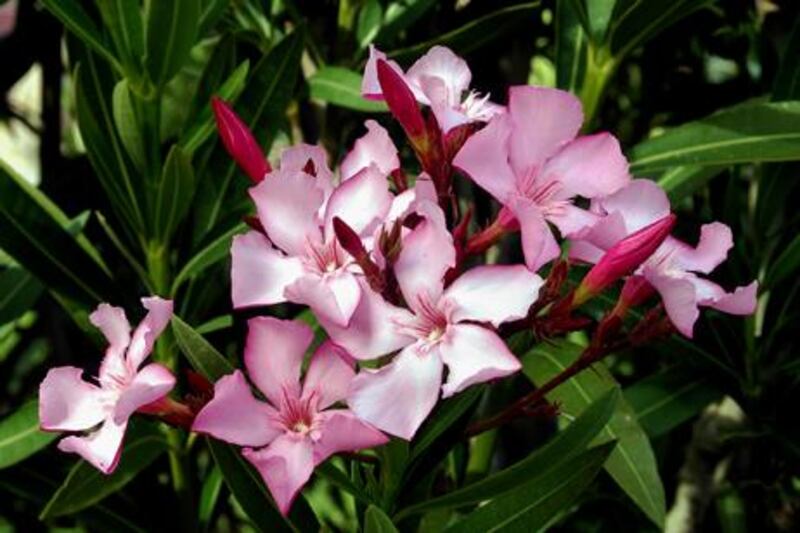Nerium oleander, Rose Bay, Laurier Rose Like bougainvillaea and jasmine, oleander should feature in any Top 10 of the world's most popular and ubiquitous landscape plants. Many people fail to realise, however, that it is also one of the world's most poisonous, and that in some countries its toxicity makes the sale of this plant illegal.
All parts of the plant are poisonous if ingested, contact with the foliage can irritate the skin and, if inhaled, even the smoke from burning oleander wood is dangerous. Despite this, oleander has been cultivated since ancient times in the Mediterranean - it features in many of the wall paintings preserved at Pompeii - and continues to be a garden stalwart, growing successfully in private and municipal planting schemes from the US to China.
Oleander tolerates drought, salt and heat but prefers to have cool roots and planting conditions that mimic the dried-up riverbeds that are its native habitat. For this reason it prefers to be planted next to walls, patios and under heavy mulches.
Oleander can be grown as a tree, specimen shrub, hedge or in a container, and can be propagated by seed and cuttings. Hard pruning helps to maintain its shape.





